News
Tom Details What's New in vSphere 8 (and 'Why People Are Excited About It')
vSphere 8 was one of the most-talked about subjects at VMware Explore this year. After reading over its documentation and watching a few sessions, I've had a chance to discover why people are excited about it, which I will discuss in this article.
Even though vCenter Server and ESXi hosts are typically the vSphere components that first come to mind, vSphere is actually made up of many other components and features such as VMware vSphere Storage DRS, VMware vSphere Fault Tolerance, vRealize Orchestrator and vSphere Lifecycle Manager.
Why vSphere 8?
As the industry continues to embrace technologies like the cloud, edge computing and Software-as-a-Service (SaaS) applications, VMware has realized that they need to extend their marquee product (vSphere) to better align with these trends. In this regard, VMware has laid out three current needs that they see in the industry: additional server capacity, specialized infrastructure silos and a CPU-centric-based security model.
Even though you may have your vCenter server and ESXi hosts running on premises, they can still be accessed from vSphere's Cloud Console, which is available in vSphere 8. This allows you to access your vSphere environment(s), as well as other cloud services, regardless of if you are in your datacenter or not. This is the same cloud console that is used by VMware Cloud on AWS, Google Cloud and Azure.
The VMware Cloud Portal accesses on-premises vSphere resources to the Cloud Console via a gateway that resides on premises. Of course, the Cloud Portal can access multiple on-premises vSphere environments as well as public cloud resources.
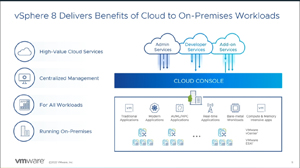 [Click on image for larger view.]
[Click on image for larger view.]
A Look at the Cloud Console
The layout of the Cloud Console is intuitive and has a menu bar on the left side.
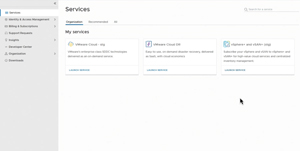 [Click on image for larger view.]
[Click on image for larger view.]
More details are shown in the center pane, and many of the individual components can be expanded for more specific information.
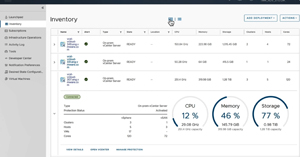 [Click on image for larger view.]
[Click on image for larger view.]
Some of the other vSphere components such as vRealize are surfaced in the Cloud Console.
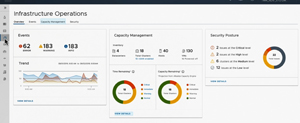 [Click on image for larger view.]
[Click on image for larger view.]
Virtual Machines
When deploying VMs from the Cloud Console, you can decide which vCenter should host them.
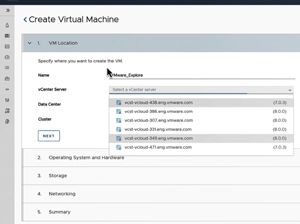 [Click on image for larger view.]
[Click on image for larger view.]
For VM placement, vSphere now has Enhanced Memory Monitoring and Remediation (vMMR2) which factors-in memory statistics, latency and miss rates when deciding where a VM should reside.
Infrastructure-as-a-Service (IaaS) is mandatory in datacenters both large and small. To support this, vSphere has a neat feature where it displays the YAML code that can be used to programmatically deploy a VM when you create one.
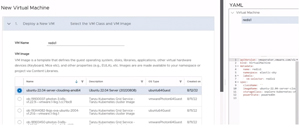 [Click on image for larger view.]
[Click on image for larger view.]
vSphere 8 and DPUs
I have long been interested in Data Process Units (DPUs), and vSphere 8 has the vSphere Distributed Service Engine to support them.
DPUs reside on servers and take over functions such as networking and security from the server to free up the central processor to run applications. By having an integrated engine, you can more closely coordinate the functions on the server and the DPUs to manage the workloads on each of them.
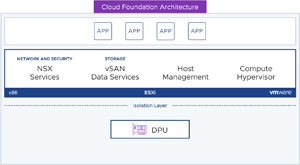 [Click on image for larger view.]
[Click on image for larger view.]
To drive home the need for DPUs in one presentation, VMware stated that up to 30 percent of CPU capacity is being consumed by network and security services.
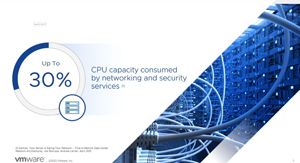 [Click on image for larger view.]
[Click on image for larger view.]
One of the neat features with regards to DPUs is that when an ESXi host detects a DPU on it, it will recognize it and give you the option to install ESXi on the DPU!
Quicker Updates
vSphere 8 supports a quick-update feature that greatly reduces downtime when updating a vCenter server. It accomplishes this by creating a new vCenter server and then bringing in the configuration and persistent data from an existing vCenter server. This has the added benefit of being able to restore the old vCenter server if you have issues with the upgrade by restoring the old instance.
Updating ESXi hosts is quicker and more streamlined by pre-staging the ESXi image and allowing multiple hosts to be remediated in parallel.
Conclusion
Overall, vSphere 8 is a natural progression for VMware. Obviously the most visible change is Cloud Connector which allows administrators to access vSphere environments regardless of where they are located. Feature-wise, I like the fact that they are currently embracing and making DPUs first-class citizens as well as making it easier to deploy VMs using YAML code.
VMware has a hands-on lab with vSphere Distributed Services Engine and other vSphere 8 technologies for those who want to take a deeper look into it.
About the Author
Tom Fenton has a wealth of hands-on IT experience gained over the past 30 years in a variety of technologies, with the past 20 years focusing on virtualization and storage. He previously worked as a Technical Marketing Manager for ControlUp. He also previously worked at VMware in Staff and Senior level positions. He has also worked as a Senior Validation Engineer with The Taneja Group, where he headed the Validation Service Lab and was instrumental in starting up its vSphere Virtual Volumes practice. He's on X @vDoppler.